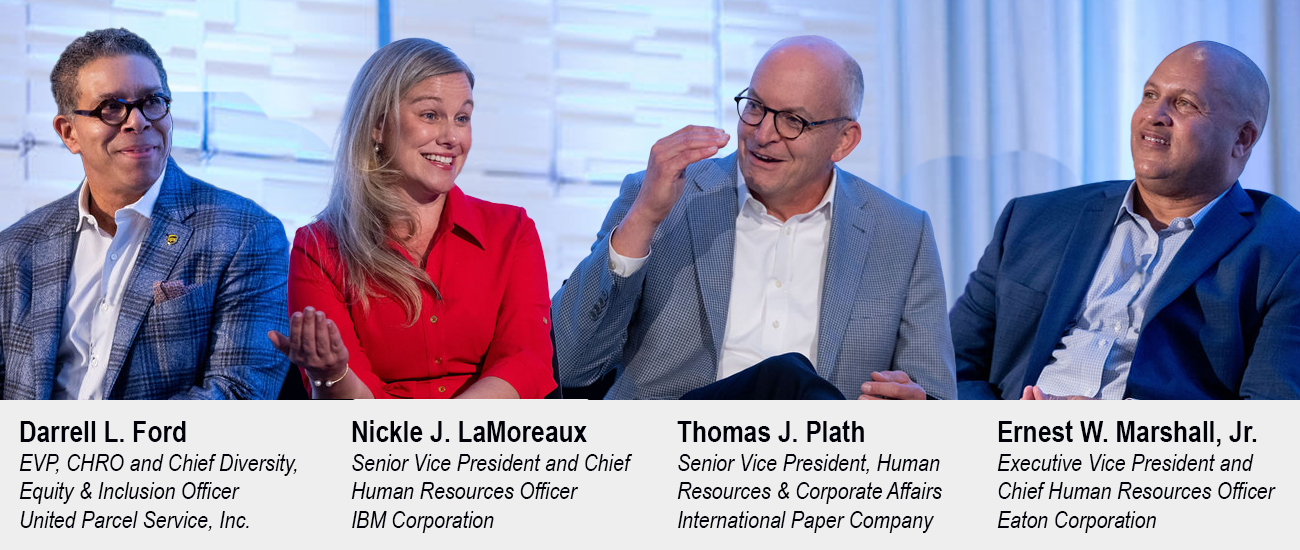An all-CHRO lightening round panel titled “Bringing it All Together” discussed how CHROs develop a reasoned perspective and response to the issues discussed during the day. These included the impact of the Harvard decision, incorporating artificial intelligence, the heightened attention to employee voice and union organizing and evolving approaches to employee engagement.

HR essential to leadership voice on diversity. Moderated by Darrell Ford, EVP, CHRO and Chief Diversity Officer of UPS, the panel discussion began with the recent Harvard decision which has caused companies to reevaluate their diversity programs and reassess their priorities. Ernest Marshall, CHRO of Eaton, shared that it is important for organizations to “know where they stand” and “be the voice of what is right.” Nickle LaMoreaux, SVP and CHRO of IBM, discussed the importance of both internal and third-party assessments of diversity initiatives. She emphasized HR leaders need to educate employees and board members about what affirmative action and diversity efforts are to avoid any misinterpretation.
Unifying the CEO and board on DEI decisions. Explain how diversity and human capital strategies are integrated into broader business strategies to get your boards and CEOs to look at the big picture, advised Tom Plath, SVP, HR and Corporate Affairs, International Paper Company. Mr. Marshall also suggested looking at the composition of the board when DEI conversations take place.
Define AI before moving forward on how it will be used. Ms. LaMoreaux shared that it is important to “level set first and put principles in place for how, when, and where you will use AI.” For IBM, AI will impact business and human resources operations and for that purpose, IBM has developed the following principles:
- AI is not a decision maker. Managers are the final decision makers while AI provides recommendations.
- All AI algorithms should be scalable and constantly monitored to avoid bias.
- The AI process should be transparent – anybody interacting with AI can understand the data sources and how it makes recommendations.
- AI should not be used for talent acquisition.
What do employees want to tell us? As employers face rising union and labor activities and changing employee expectations and expressions, Mr. Plath advised the audience to think of two questions: What do our employees want to tell us? And what do employees want to hear from us? He further explained that the answers to these two questions, framed by transparency, follow-up, and recognition help companies build individual relationships, enhance engagement, and give a purpose to work.

Wenchao Dong
Senior Director and Leader, HR Policy Global, HR Policy Association
Contact Wenchao Dong LinkedIn